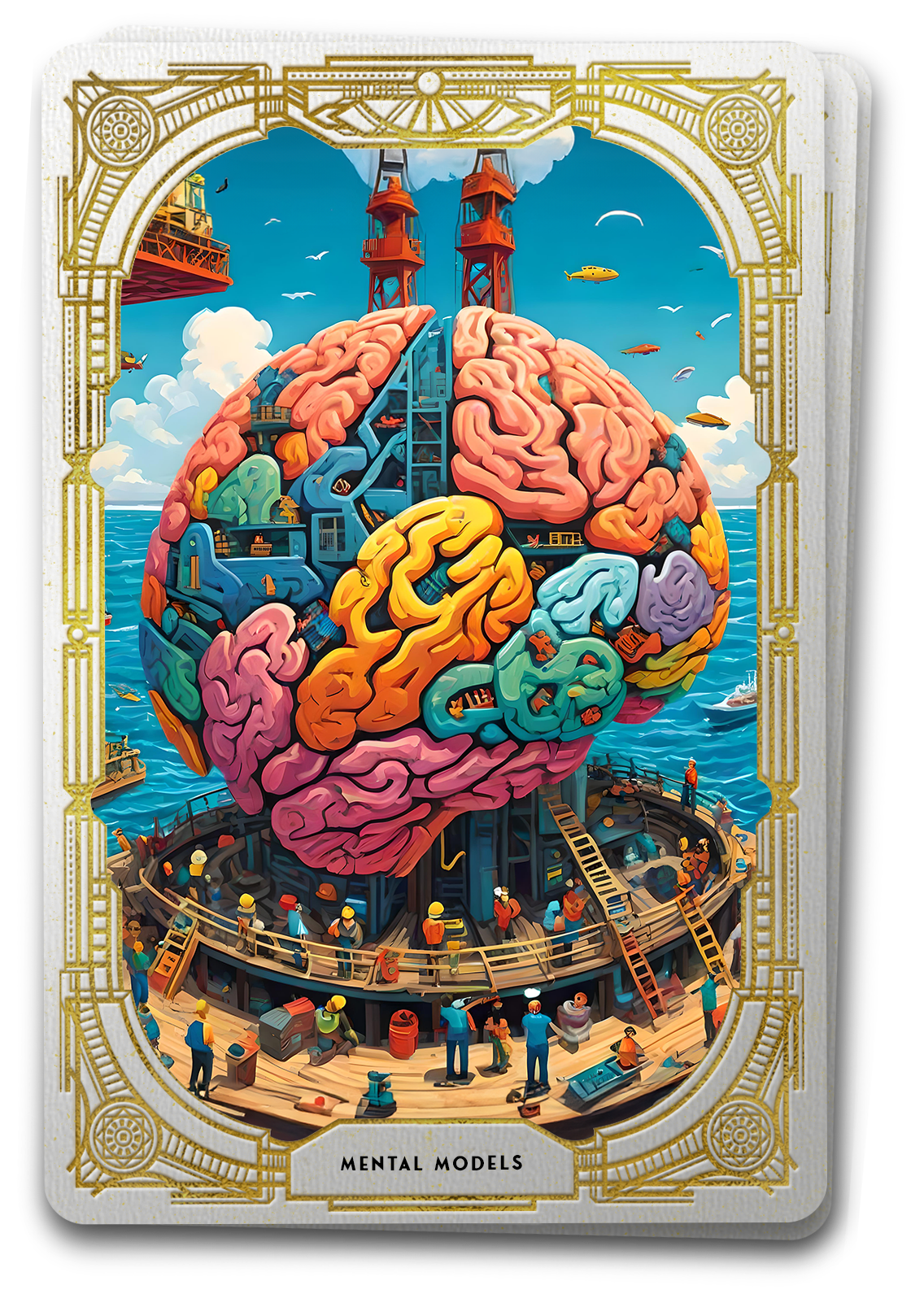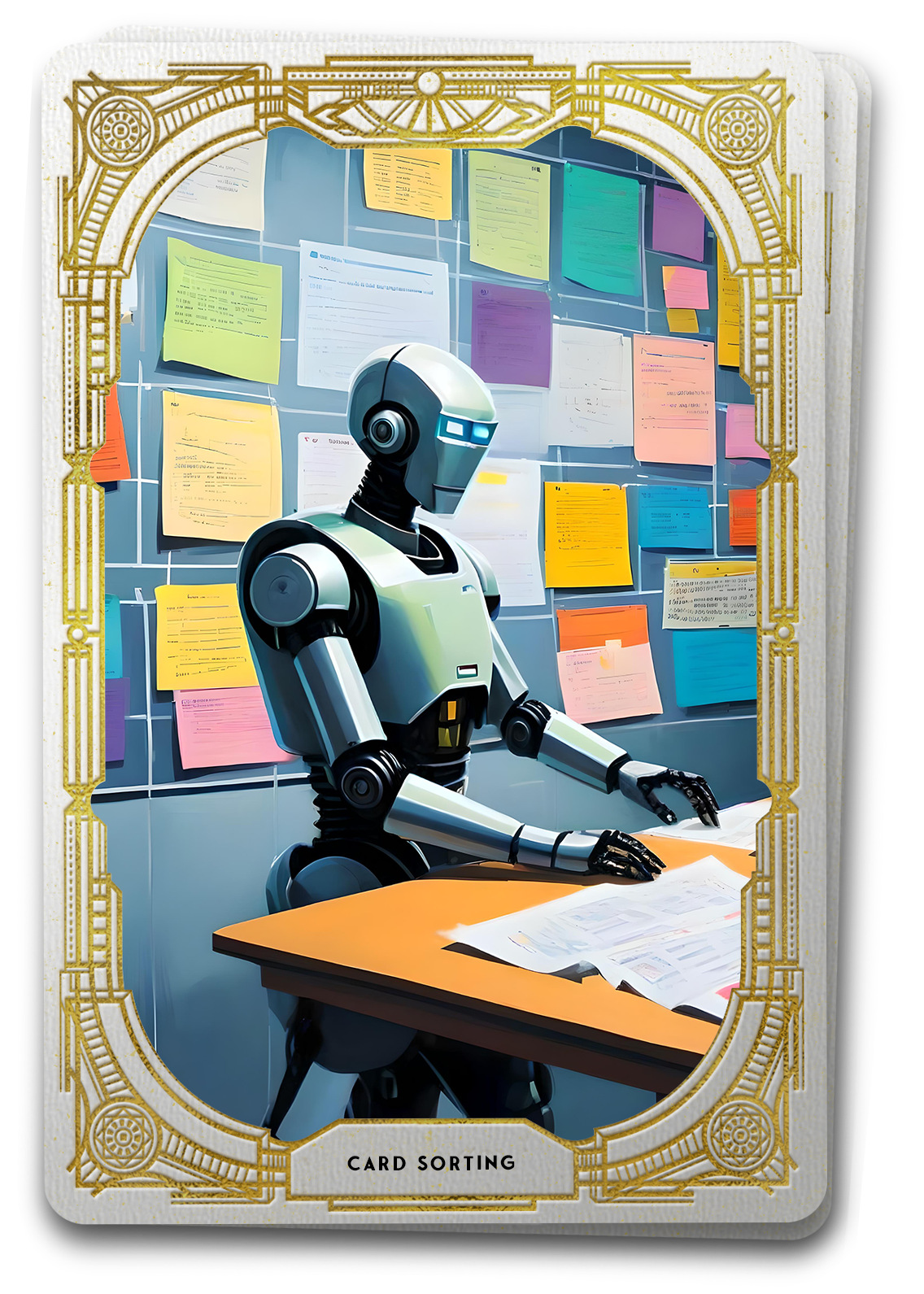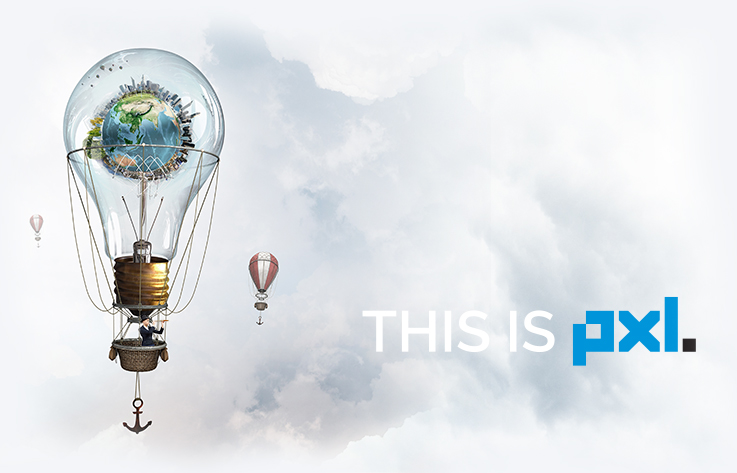
The Tarot Reveals Mental Models:
How a user *thinks* things should work
Mental Model Defined: Simplifying Choices
When we embark on a journey into the digital psyche, we begin to unravel the concept of “Mental Models” and their importance in User Experience (UX) design. Picture mental models as the navigational charts users create, guiding them through the digital seascape. These internal representations are constructed based on users’ past experiences, learned behaviors, and interactions. A mental model is essentially a cognitive map that dictates how users anticipate, interpret, and engage with the digital world.
The Analogous Journey: Understanding User Thought Processes
Imagine a ship navigating uncharted waters—each user embarks on a unique journey through your digital seascape. The mental model serves as their map, guiding them through the interface’s twists and turns. Just as a skilled navigator adjusts their course based on the ocean’s nuances, designers must tailor interfaces to align with users’ cognitive maps. The success of the voyage hinges on this harmonious interplay between the digital landscape and users’ mental models.
The Cognitive Seascape
Cognitive Mapping:
- Insight: Mental models are the result of users mapping their understanding of the digital environment. It’s akin to creating a mental topography—a cognitive landscape that influences how users perceive and navigate interfaces.
- Application: Design interfaces that resonate with users’ cognitive maps. This involves incorporating familiar patterns, structures, and interactions to align with their mental models.
Predictive Framework:
- Insight: Users develop mental models to predict the outcomes of their interactions. It’s a form of digital clairvoyance, where users rely on their cognitive frameworks to anticipate system responses and validate their understanding.
- Application: Provide clear and consistent feedback mechanisms. Users depend on these cues to validate their mental models, enhancing their sense of control and confidence in their interactions.
Bridging Realities: Aligning Design with Mental Models
Harmonizing with User Expectations:
- Challenge: The challenge lies in ensuring that design elements align seamlessly with users’ mental models. Any deviation may disrupt the intuitive flow of the interface, leading to confusion.
- Solution: Conduct thorough user research to comprehend prevalent mental models within your target audience. Use this insight to inform design decisions and create a harmonious user experience.
Iterative Design for Mental Model Optimization:
- Approach: Embrace an iterative design process that incorporates continuous user feedback loops. This approach helps identify areas where mental models may conflict with design elements, enabling ongoing optimization.
- Outcome: The result is an interface that not only meets user expectations but evolves alongside their changing mental models.
Applying Psychology to Design
User-Centric Persona Integration:
- Action: Develop user personas that encompass prevalent mental models. This comprehensive approach ensures designs resonate with diverse cognitive frameworks within your user base.
Interactive Prototyping for Validation:
- Action: Utilize interactive prototypes to validate the alignment of design elements with users’ mental models. This hands-on approach allows for real-time adjustments based on user interactions.
Usability Testing with Cognitive Insights:
- Action: Enhance usability testing by incorporating cognitive insights. Understand how users conceptualize interactions, uncover potential challenges, and refine designs for optimal alignment with mental models.
Anchoring Insights: The Safe Harbor of UX Design Clarity
When navigating the stormy waters of your digital seascape, your design endeavors can still follow a well-charted course. By comprehending the cognitive maps users bring to the digital table, designers can steer interfaces towards optimal clarity and intuitiveness. The alignment of design with mental models isn’t just a practice; it’s a navigational art—a voyage where user expectations and design realities create safe passage. On such a voyage, your digital seascape becomes a charted sea, inviting users on a journey where their mental models find harmony with every interaction.
Follow us for more insights on unraveling the mysteries of UX as we continue to navigate “The Tarot of User Experience.”





